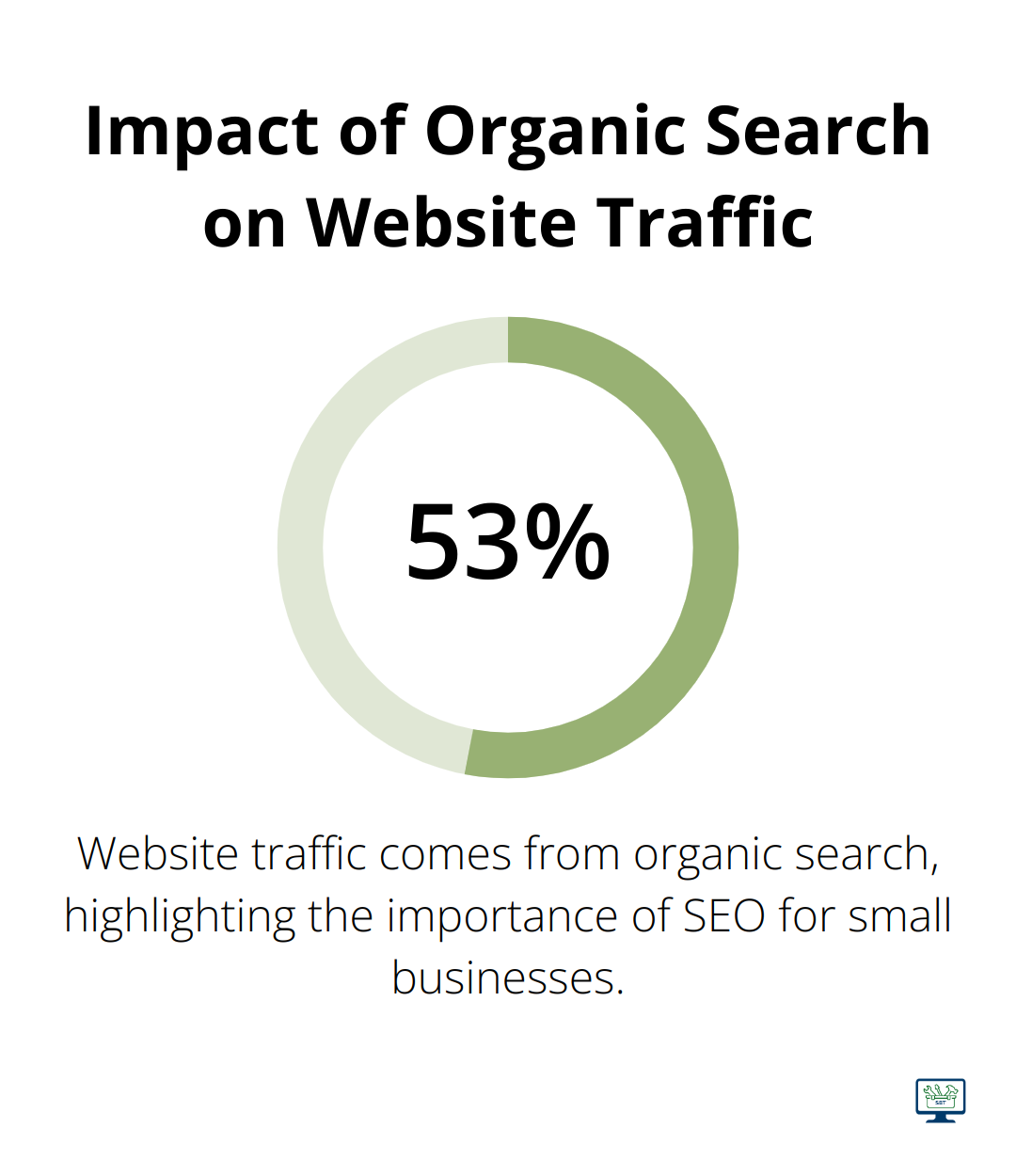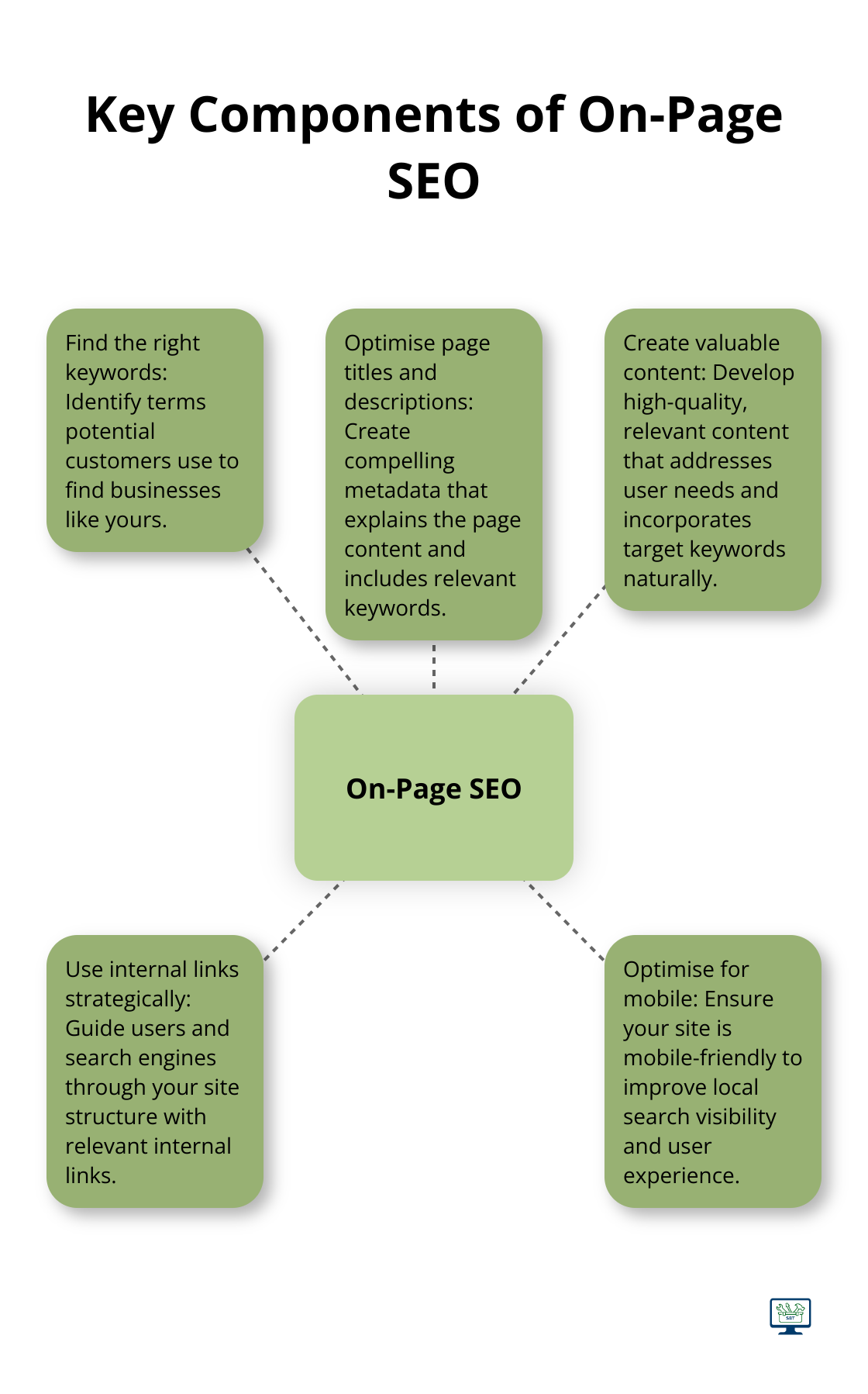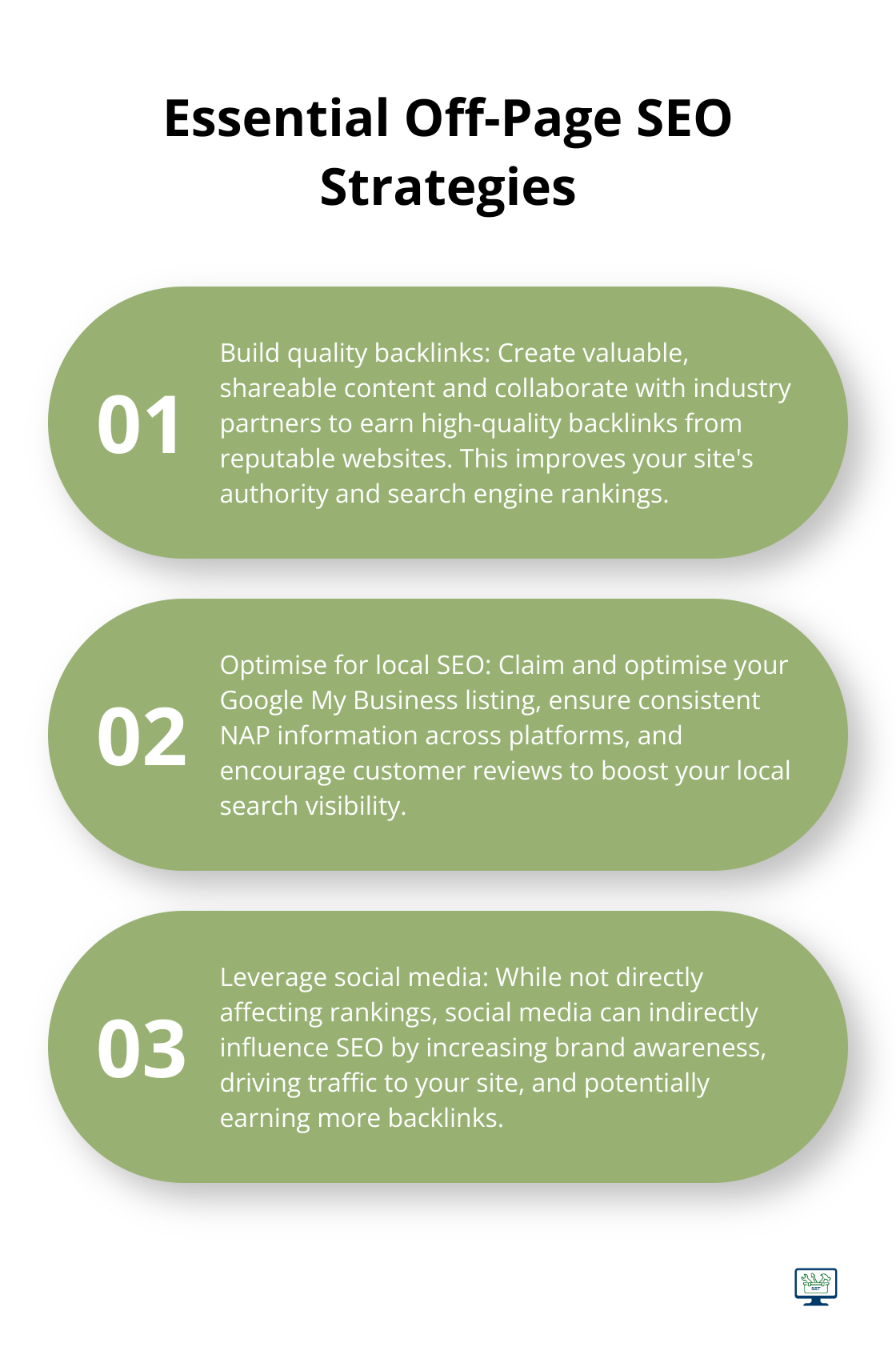DIY SEO: Tips for Optimizing Your Site Yourself

Published On Jul 17,2025
At WebsiteStrategies, we understand that SEO can seem daunting for small business owners. But with the right knowledge and tools, you can boost your website’s visibility without breaking the bank.
This guide will walk you through practical, do-it-yourself SEO techniques tailored for Australian businesses. By implementing these strategies, you’ll be well on your way to improving your search engine rankings and attracting more potential customers.
What is SEO and Why Does it Matter?
Search Engine Optimisation (SEO) is the practice of improving your website to increase its visibility when people search for products or services related to your business on Google and other search engines. For small businesses in Australia, SEO can transform your online presence. It’s not just about attracting more traffic; it’s about attracting the right traffic.
The Power of Organic Search
BrightEdge research shows that 53.3% of all website traffic comes from organic search. This statistic highlights a significant opportunity for small businesses with limited marketing budgets. SEO offers a cost-effective way to compete with larger companies and reach potential customers who are actively searching for your products or services.

Key Components of SEO
SEO comprises several interconnected strategies:
- On-page SEO: This involves optimising individual web pages, including content and HTML source code.
- Off-page SEO: This focuses on improving your site’s reputation and authority through backlinks from other reputable sites.
- Technical SEO: This ensures your website is structured and set up to be easily crawled and indexed by search engines.
How Search Engines Work
Search engines use complex algorithms to determine which pages to show for any given search query. These algorithms consider hundreds of ranking factors, but some key elements include:
- Relevance: How well does your content match the user’s search query?
- Authority: How trustworthy and expert is your site on the topic?
- User experience: Is your site easy to navigate and fast to load?
Mobile-First Indexing
Google now uses mobile-first indexing, which means they primarily use the mobile version of your site for ranking and indexing. This shift reflects the rise in mobile internet usage. Mobile optimisation is crucial for Australian websites to future-proof their online presence.
Local SEO for Australian Businesses
For small businesses in Australia, local SEO plays a vital role. Research indicates that 46% of Google searches in Australia have local intent. This means optimising for local search terms and claiming your Google My Business listing can significantly impact your visibility to nearby customers.
Understanding these SEO basics sets the foundation for improving your online visibility. In the next section, we’ll explore specific on-page SEO techniques you can implement today to start climbing the search engine rankings. These practical strategies will help you optimise your website’s content and structure for better search performance.
On-Page SEO Techniques You Can Implement Today
On-page SEO forms the cornerstone of any effective search engine optimisation strategy. It involves optimising your website to appeal to both search engines and users. Here are practical steps you can take to improve your on-page SEO:

Find the Right Keywords
Identify the terms your potential customers use to find businesses like yours. Tools such as Google Keyword Planner or Ubersuggest help you discover relevant keywords with good search volume and low competition. Focus on long-tail keywords (phrases with three or more words) as they often have higher conversion rates.
For example, instead of targeting broad terms like “shoes”, a small Australian shoe retailer might focus on more specific phrases like “handmade leather boots in Melbourne” or “eco-friendly sneakers Australia”.
Optimise Your Page Titles and Descriptions
Optimise content for users first. Use keywords in the URL and content, write metadata that explains the page, and create useful links to high-quality content.
A good title for our shoe retailer might be: “Handmade Leather Boots Melbourne | EcoSole Footwear”
And a meta description: “Discover EcoSole’s range of handcrafted leather boots in Melbourne. Ethically sourced, sustainably made. Visit our CBD showroom or shop online today.”
Create Valuable Content
Understand your online customers, use keywords on your website, update your content regularly, get linked on other websites, and use meta tags.
For instance, our shoe retailer could write articles on topics like “How to Care for Leather Boots” or “10 Reasons to Choose Eco-Friendly Footwear”. These pieces not only help with SEO but also establish your expertise and build trust with potential customers.
Use Internal Links Strategically
Internal linking helps search engines understand the structure of your website and the relationships between different pages. It also guides users to related content, keeping them engaged on your site longer.
When you create content, look for opportunities to link to other relevant pages on your site. For example, in a blog post about leather care, our shoe retailer could link to their product pages for leather conditioner or cleaning brushes.
Optimise for Mobile
Mobile SEO’s effect on local search and customer gain is huge. By making your site mobile-friendly, you’re more likely to show up in local search results.
Now that we’ve covered on-page optimisation techniques, let’s move on to off-page SEO strategies that can further boost your website’s visibility and authority in search engine results.
Off-Page SEO Strategies for Small Businesses

Building Quality Backlinks
Quality backlinks from reputable websites act as votes of confidence for your site in the eyes of search engines. To build high-quality backlinks in the Australian market, create valuable, shareable content that others want to link to. Reach out to industry partners, suppliers, or complementary businesses and suggest collaborations or guest posting opportunities. Local business directories and chambers of commerce offer excellent sources for relevant backlinks.
Local SEO Tactics for Australian Businesses
For Australian businesses, local SEO transforms online visibility. Claim and optimise your Google My Business listing with accurate information, high-quality photos, and regular updates. Encourage satisfied customers to leave reviews and engage with them. Ensure your business name, address, and phone number (NAP) remain consistent across all online platforms to boost your local search visibility.
Social Media and Its Impact on SEO
While social media signals don’t directly affect rankings, they indirectly influence SEO by increasing brand awareness and driving traffic to your site. Share your content on platforms where your target audience is most active. For instance, LinkedIn might suit B2B services, while Instagram could work better for visual products. Engage with your followers and encourage them to share your content, expanding your reach and potentially earning more backlinks.
Online Reputation Management
Online reputation management is crucial for maintaining a positive image. Monitor your online presence using tools to track brand mentions, reviews, and keywords associated with your business. Respond promptly and professionally to reviews (both positive and negative). Address customer concerns publicly to demonstrate your commitment to customer satisfaction. Encourage happy customers to share their experiences online, which can help balance out any negative reviews.
Leveraging Industry Partnerships
Collaborate with other businesses in your industry (but not direct competitors) to create mutually beneficial content or events. This approach can lead to natural backlinks, increased exposure, and improved authority in your field. Consider joint webinars, co-authored whitepapers, or cross-promotions to expand your reach and build valuable connections within your industry.
Final Thoughts
SEO do-it-yourself strategies can significantly boost your small business’s online visibility. You have laid a solid foundation by implementing on-page techniques and strengthening your efforts with off-page tactics. SEO requires consistent effort and patience, but staying committed to these practices will yield long-term benefits for your Australian small business.
As your business grows, you might find it challenging to keep up with the ever-changing SEO landscape. Professional help could provide you with a clear roadmap to stronger Google rankings and sustainable online growth. At WebsiteStrategies, we offer SEO consultancy and comprehensive audits for Australian and New Zealand SMEs.
The ultimate goal is to create a user-friendly website that provides value to your visitors. This approach will not only improve your search engine rankings but also build a strong, trustworthy online presence. Keep refining your SEO strategy based on what works best for your business (and stay informed about industry trends).
